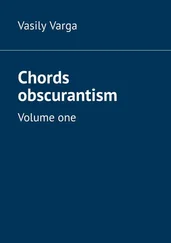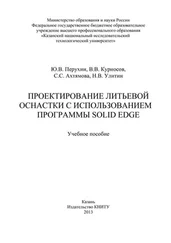1 Cover
2 About the Authors About the Authors Professor Boris V. Novozhilov Professor Boris V. Novozhilov (1930–2017) was born in Alma‐Ata (Kazakhstan, which at that time was part of the Soviet Union). He graduated with honors in Applied Physics from the Leningrad (currently Peter the Great St. Petersburg) Polytechnic Institute in 1953. He received his PhD (1959) and DrSc (1968) degrees in Physical and Mathematical Sciences. From 1954 to 2017, Professor B.V. Novozhilov worked at the Institute of Chemical Physics (currently the Semenov Institute of Chemical Physics) of the USSR (later Russian) Academy of Sciences in various roles, including the Head of Laboratory of Mathematical Methods in Chemical Physics (1976–1992) and Chief Researcher. Professor B.V. Novozhilov is best known for his outstanding fundamental contribution to the theory of propellant combustion and, together with Ya. B. Zeldovich, is a founder of the Zeldovich–Novozhilov theory of nonsteady solid propellant combustion. Professor B.V. Novozhilov's other research interests include nuclear physics (propagation of gamma quanta in matter), the theory of spin combustion, and the theory of “cold” flame propagation. Professor B.V. Novozhilov is a recipient of the Ya. B. Zeldovich Gold Medal from The Combustion Institute “for outstanding contributions to the theory of combustion” (1996). He has also received a number of Russian Federation Government Awards in Science and Technology. Professor B.V. Novozhilov is the author of over 150 journal papers and 12 books.
Professor Boris V. Novozhilov Professor Vasily B. Novozhilov Professor Vasily B. Novozhilov Professor Vasily B. Novozhilov was born in 1963 in Moscow. He graduated with an MSc in Applied Mathematics from the Russian State University of Oil and Gas in 1986. He later received a PhD in Physical and Mathematical Sciences (Mechanics of Fluid, Gas and Plasma) from the Moscow Aviation Institute in 1993. Professor V.B. Novozhilov held research positions at the Russian Academy of Sciences (Institute for Problems in Mechanics) and the University of Sydney. Furthermore, he held academic appointments at Nanyang Technological University (Singapore), as a Professor in Fire Dynamics at The University of Ulster (UK), and as a Professor of Mathematics at Victoria University (Australia). From 2014 to 2017 he was a Director of the Centre for Environmental Safety and Risk Engineering at Victoria University, Australia. Major research interests of Professor V.B. Novozhilov include combustion (solid propellants, combustion theory and fire research) and the theory of heat transfer. He is a leading expert in theoretical and computational methods in the areas of combustion and fire research, in particular, computational fluid dynamics modelling of compartment fires. He has also made important contributions to the application of dynamical system methods in fire dynamics, and has also been greatly involved with analytical methods of the heat transfer theory in application to ultra‐fast heat transfer processes. Professor V.B. Novozhilov is the author of over 60 journal papers and four book chapters. He was a Keynote Speaker at the 68th International Astronautical Congress (2017) delivering an overview of the fundamentals of the Zeldovich–Novozhilov propellant combustion theory, as well as of other contributions by Professor B.V. Novozhilov to the physics of combustion.
3 Preface
4 Important Notation and Abbreviations Notation
5 About the Companion Website
6 1 Steady‐state Combustion1.1 General Characteristics of Solid Propellants 1.2 Burning Rate and Surface Temperature 1.3 Combustion Wave Structure. Burning Temperature 1.4 Combustion in Tangential Gas Stream 1.5 Gaseous Flame 1.6 Combustion Waves in the Condensed Phase 1.7 The Two Approaches to the Theory of Nonsteady Propellant Combustion 1.8 Steady‐state Belyaev Model
7 2 Equations of the Theory of Nonsteady Combustion 2.1 Major Assumptions 2.2 Zeldovich Theory: Constant Surface Temperature 2.3 Variable Surface Temperature 2.4 Integral Formulation of the Theory 2.5 Theory Formulation through the Set of Ordinary Differential Equations 2.6 Linear Approximation 2.7 Formal Mathematical Justification of the Theory
8 3 Combustion Under Constant Pressure 3.1 Stability Criterion for a Steady‐state Combustion Regime 3.2 Asymptotical Perturbation Analysis 3.3 Two‐dimensional Combustion Stability of Gasless Systems 3.4 Combustion Beyond the Stability Region 3.5 Comparison with Experimental Data
9 4 Combustion Under Harmonically Oscillating Pressure 4.1 Linear Burning Rate Response to Harmonically Oscillating Pressure 4.2 Acoustic Admittance of Propellant Surface 4.3 Quadratic Response Functions 4.4 Acoustic Admittance in the Second‐order Approximation 4.5 Nonlinear Resonance 4.6 Response Function Bifurcations 4.7 Frequency–Amplitude Diagram 4.8 Comparison with Experimental Data
10 5 Nonsteady Erosive Combustion5.1 Problem Formulation 5.2 Linear Approximation 5.3 Nonlinear Effects in Nonsteady Erosive Combustion
11 6 Nonsteady Combustion Under External Radiation6.1 Steady‐state Combustion Regime 6.2 Heat Transfer Equation in the Linear Approximation 6.3 Linearization of Nonsteady Burning Laws 6.4 Steady‐state Combustion Regime Stability 6.5 Burning Rate Response to Harmonically Oscillating Pressure 6.6 Burning Rate Response to Harmonically Oscillating Radiative Flux 6.7 Relation Between Burning Rate Responses to Harmonically Oscillating Pressure and Radiative Flux
12 7 Nonacoustic Combustion Regimes7.1 Acoustic and Nonacoustic Combustion Regimes 7.2 Linear Approximation 7.3 Approximate Approach in the Theory of Nonsteady Combustion 7.4 Self‐similar Solution 7.5 Self‐similar Solution Stability 7.6 Propellant Combustion and Extinction Under Depressurization: Constant Surface Temperature 7.7 Propellant Combustion and Extinction Under Depressurization: Variable Surface Temperature
13 8 Modelling Nonsteady Combustion in a Solid Rocket Motor 8.1 Introduction 8.2 Nonacoustic Regimes: Problem Formulation 8.3 Stability of the Steady‐state Regime in a Semi‐enclosed Volume 8.4 Transient Regimes 8.5 Unstable and Chaotic Regimes 8.6 Experimental Data 8.7 Acoustic Regimes 8.8 Automatic Control of Propellant Combustion Stability in a Semi‐enclosed Volume
14 9 Influence of Gas‐phase Inertia on Nonsteady Combustion 9.1 Introduction 9.2 Steady‐state Combustion Regime Stability 9.3 Burning Rate Response to Harmonically Oscillating Pressure 9.4 Acoustic Admittance of the Propellant Surface 9.5 Combustion and Extinction Under Depressurization 9.6 t rApproximation
15 References
16 Theory of Solid‐Propellant Nonsteady CombustionProblems
17 Theory of Solid‐Propellant Nonsteady CombustionProblem Solutions
18 Index
19 End User License Agreement
1 Chapter 1 Table 1.1 Properties of the condensed phase. Table 1.2 Properties of combustion products. Table 1.3 Burning rate and surface temperature of the propellant N at T a= 20 ... Table 1.4 Burning rate and surface temperature of the propellant N (Zenin 198... Table 1.5 Burning rate and surface temperature of the propellant N (Zenin 198... Table 1.6 Burning temperatures of the propellant N at T a= 20 °C. Table 1.7 Burning temperatures of the propellant N atp = 20 atm...
2 Chapter 3Table 3.1 Extraction from Laplace–Carson transform tables.Table 3.2 The parameters k , r and the critical values r * for ballistite N ...Table 3.3 Burning rate and surface temperature of ballistite N as a function ...Table 3.4 Parameters of the combustion zones of ballistite N as a function of...Table 3.5 Parameters k , r , r *and other experimental data for ammonium per...
Читать дальше












